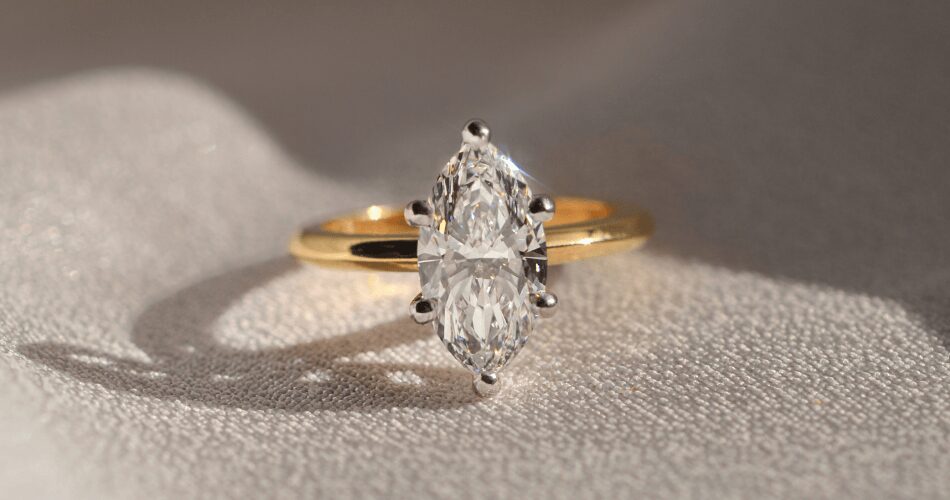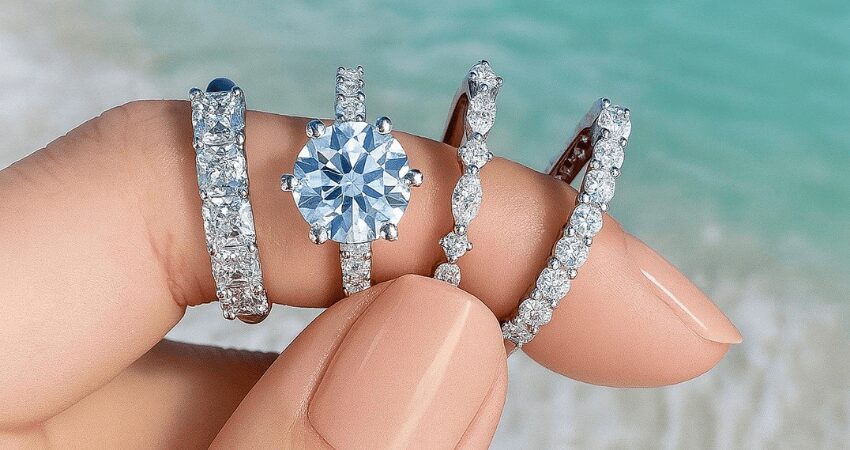Natural Diamonds and Lab-Grown Diamonds: Understanding the Differences for Informed Jewellery Purchases
Natural diamonds have captivated people for centuries with their brilliance and rarity. However, technological advancements have introduced lab-grown diamonds, often leading to confusion. Knowing how to differentiate between mined diamonds and their lab-grown counterparts is essential for making informed decisions when buying diamond jewellery. This guide explores the characteristics of both types and how to identify Natural Diamonds and Lab-Grown Diamonds.
What Are Lab-Grown Diamonds, and How Do They Differ from Mined Diamonds?
Lab-grown diamonds form in a controlled environment that replicates natural diamond formation. These diamonds match mined diamonds in chemical, physical, and visual properties. The key difference lies in their origin. While mined diamonds develop naturally over millions of years deep within the Earth, lab-grown diamonds are made in weeks or months using advanced technology.
Two common methods, High Pressure High Temperature (HPHT) and Chemical Vapor Deposition (CVD), create lab-grown diamonds. Both methods mimic the conditions under which natural diamonds form. Despite different origins, lab-grown and mined diamonds share the same atomic structure, making them indistinguishable to the naked eye.
How Can I Tell if a Diamond Is Lab-Grown or Mined?
Determining whether a diamond is lab-grown or mined can be challenging without special tools or certification. Both types look identical, making visual inspection insufficient. However, a few hints can help:
- Price: Lab-grown diamonds generally cost less than mined diamonds of the same quality. This price difference reflects lower production costs and the absence of mining expenses.
- Certification: The most reliable way to confirm a diamond’s origin is through certification. Trusted gemmological labs, like the GIA and IGI, issue certificates that state whether a diamond is lab-grown or mined. These certificates provide detailed information about the diamond’s characteristics and origin.
For absolute certainty, consult a professional gemmologist. They use advanced tools to detect subtle differences between lab-grown and mined diamonds.
Are There Differences in the Brilliance and Sparkle of Lab-Grown Diamonds Compared to Mined Diamonds?
Lab-grown and mined diamonds exhibit the same brilliance and sparkle. Both types share identical optical properties, including fire, scintillation, and brilliance. These qualities depend on the diamond’s cut, which determines how light interacts with the stone. A well-cut diamond, whether lab-grown or mined, will display the same dazzling sparkle.
Do Lab-Grown Diamonds Have Inclusions and Flaws Like Mined Diamonds?
Yes, both lab-grown and mined diamonds can have inclusions and flaws. These imperfections occur naturally in the crystal growth process. Inclusions are internal features, like tiny crystals, while flaws (or blemishes) are external irregularities.
Lab-grown diamonds often have fewer inclusions because they grow under controlled conditions. This controlled environment allows for more predictable growth, resulting in diamonds with higher clarity grades. However, inclusions and flaws in lab-grown diamonds are similar to those in natural diamonds.
Is the Certification Process Different for Lab-Grown Diamonds?
The certification process for lab-grown diamonds mirrors that for mined diamonds. Trusted gemmological labs, like the GIA and IGI, evaluate both types using the same standards. They assess diamonds based on the Four Cs: carat weight, cut, color, and clarity. The resulting certificate provides a thorough assessment of the diamond’s quality and clearly states if the diamond is lab-grown or mined.
Not all labs offer the same level of certification. Ensure that the diamond you buy comes with a certificate from a reputable institution like the GIA, AGS, or IGI, known for their strict grading practices.
Can Lab-Grown Diamonds Be Used for Fine Jewellery, Including Engagement Rings?
Absolutely. Lab-grown diamonds have become increasingly popular for fine jewellery, including engagement rings. They offer the same brilliance, durability, and versatility as mined diamonds, making them suitable for all jewellery types. Many consumers prefer lab-grown diamonds for their ethical and environmental benefits, as well as their lower cost. Lab-grown diamonds work well in any jewellery design, from classic engagement rings to elaborate statement pieces.
Do Lab-Grown Diamonds Hold Their Value Like Mined Diamonds?
Lab-grown diamonds typically have lower resale values than mined diamonds. The resale market for lab-grown diamonds is still developing, and these diamonds tend to lose value more quickly than natural diamonds. Mined diamonds, on the other hand, often appreciate in value, usually increasing by about 5% per year. This increase occurs due to their rarity and strong demand.
However, most diamonds, whether lab-grown or mined, are not purchased as financial investments. Instead, they hold value for their beauty and sentimental significance. Lab-grown diamonds can still be a valuable and cost-effective choice, especially for those prioritizing affordability and ethics.
Are There Ethical Considerations in Choosing Lab-Grown Diamonds Over Mined Diamonds?
Lab-grown diamonds are often seen as a more ethical choice due to their lower environmental impact and the absence of social issues linked to traditional mining. Mining can cause significant environmental damage, including deforestation and water pollution. Human rights concerns in some mining regions also lead many to consider alternatives.
Lab-grown diamonds, however, come with their own ethical considerations. Their production requires significant energy, which can have environmental impacts depending on the energy sources used. Despite this, many view lab-grown diamonds as a more sustainable and ethical option, especially when compared to diamonds from conflict regions.
Can Lab-Grown Diamonds Be Recycled and Repurposed Like Mined Diamonds?
Yes, you can recycle and repurpose lab-grown diamonds just like mined diamonds. They work well in new jewellery designs or as replacements for mined diamonds in existing pieces. The durability and quality of lab-grown diamonds make them just as suitable for recycling and repurposing as natural diamonds.
Are There Any Regulatory Requirements for Labelling Lab-Grown Diamonds?
Regulations often require clear labelling of lab-grown diamonds to ensure transparency and prevent confusion. For example, the Federal Trade Commission (FTC) in the United States mandates that lab-grown diamonds be clearly labelled as such in all jewellery advertisements and sales. This requirement helps consumers make informed decisions about the diamonds they purchase.
To ensure authenticity, buy diamonds with certificates from reputable gemmological labs like the GIA or AGS. These certifications provide a complete assessment of the diamond’s quality and guarantee its origin, whether lab-grown or mined.
In conclusion, both natural and lab-grown diamonds offer unique benefits. Understanding their differences helps you make informed decisions when buying diamond jewellery. Whether you choose a mined diamond for its historical significance or a lab-grown diamond for its ethical benefits, knowing what to look for ensures you select a diamond that meets your needs.





